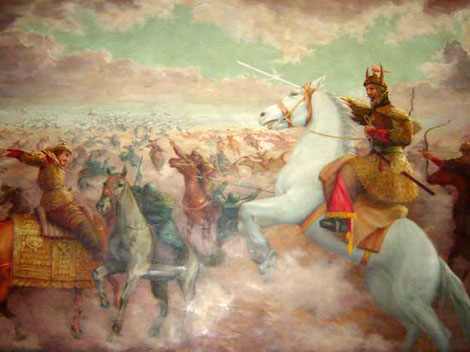The Battle of Salsu holds the grisly reputation as being one of the most lethal open-field battles in military history. Fought by the Korean kingdom of Goguryeo against the invading armies of imperial China, the battle killed over three hundred thousand men within hours of commencing on the Korean northern plains. In 612 CE, Imperial China under the Sui dynasty was bent on expansion to secure its hold on domestic politics. It saw the small kingdoms of Korea as a perfect area for conquest, as the Koreans were traditionally seen as weaker in both military and political aspects by the Chinese.
Over a million Chinese soldiers marched into Korea to conquer its people and destroy the Goguryeo kingdom in the north of the country in one of the largest land invasions ever attempted by imperial China. The Koreans were not prepared to accept subjection to Chinese ambitions and fought an effective guerrilla war against the advance.
The Chinese were constantly harassed by the retreating Koreans, who wore down their huge army, diminishing its moral and frustrating Chinese efforts to secure the Korean countryside. The Chinese eventually reached a shallow river north of Pyongyang where the Koreans had stopped running and stood to face their invaders. Korean General Euji Mundeok knew he had no chance of winning a set piece battle against the invaders, so he harnessed the power of nature. The river the Chinese were crossing was dammed upstream, which meant the water was shallow, so Euji opened the dam just as the Chinese were in the middle of fording the river, creating a huge wave of water that rushed down the valley. The water moved so quickly that the Chinese had no chance to react – the whole area flooded, drowning the Chinese warriors in their bulky armour. What was left of the army struggled to recover itself before a huge Korean cavalry attack swept down on top of them, running down the hapless survivors. The Chinese had to retreat so quickly that many of the soldiers could not outrun the bloodthirsty Koreans, creating a trail of blood and death all the way back to the Chinese-Korean border at the Liadong Peninsula.
The Sui dynasty fell in decline through loss of manpower and was eventually replaced by the Tang. Goguryeo was left in peace.
